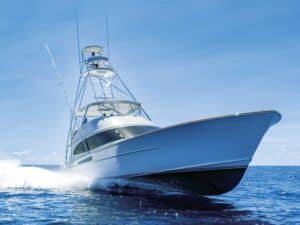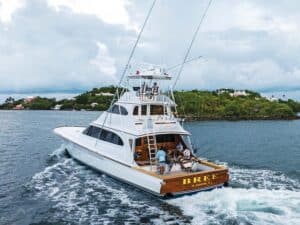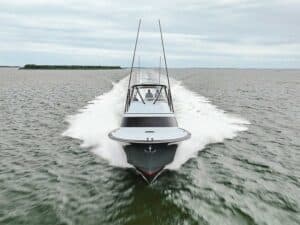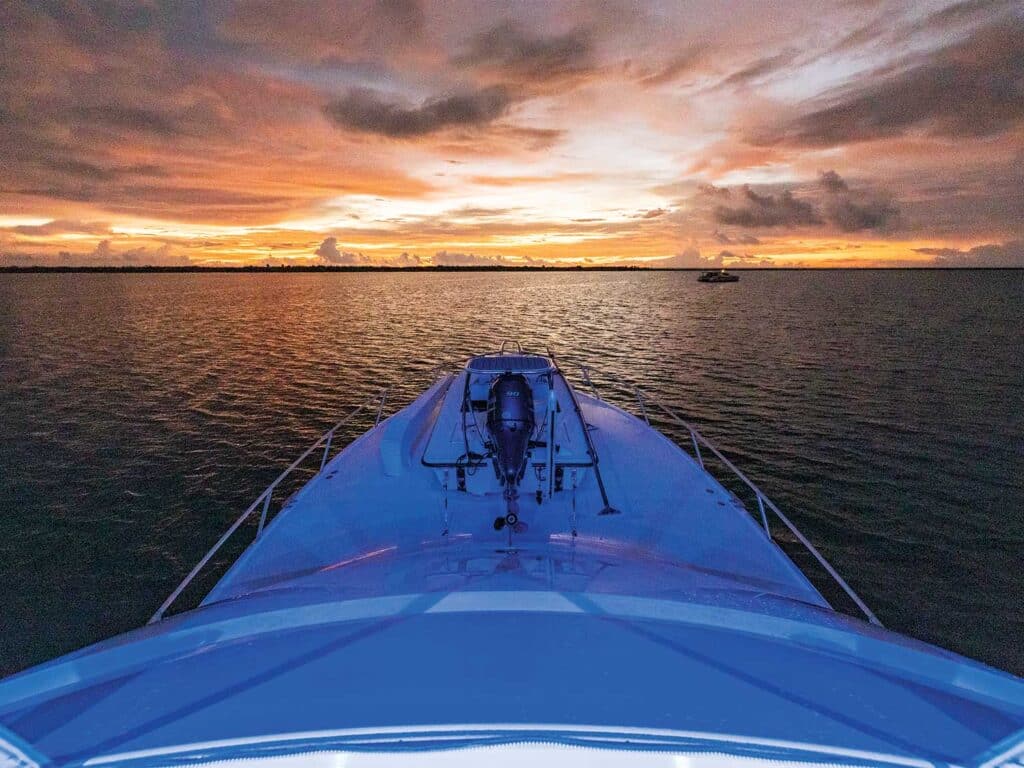
Subscribe to Marlin magazine and get a year of highly collectible, keepsake editions – plus access to the digital edition and archives. Sign up for the free Marlin email newsletter.
Have you ever thought about putting a skiff on the bow of your sport-fisherman? Notice I didn’t say RIB or hard-bottom inflatable. While they have their place in the yachting world, they’re not worthy fishing platforms. As a sport-fishing captain, inshore guide and skiff builder, here are a few of my recommendations for setting up a skiff on the bow to expand your fishing and boating opportunities.
Benefits of a Skiff
There are plenty of reasons to carry a skiff. For me, it opens up a wider range of fishing opportunities, especially when traveling. It’s always nice to take advantage of world-class flats loaded with bonefish, tarpon and permit in the Bahamas and Caribbean.
Often, offshore conditions aren’t favorable for the big boat, or a great tide window presents itself. With a skiff, you can slip onto the flats or simply catch bait for an upcoming trip. Live bait isn’t always easy to catch from the big boat, but a skiff with a properly plumbed livewell solves that problem.
Beyond fishing, skiffs are practical for a variety of other uses. They allow you to access ports without big-boat docks, clear customs, or pick up supplies. Guests may want to beach-hop, snorkel or spearfish, and a skiff makes it easy. I even once used a skiff tied alongside to help dock after losing an engine. Every captain knows maneuvering a twin-engine boat on one engine is tough. A skiff as a tug can save the day.
Picking the Right Skiff
There are plenty of options depending on the size of your sport-fisher and davit capacity. As an angler, I prefer a poling skiff with a 2- to 12-degree deadrise. A no-slap bow chine is best for fly- and light-tackle fishing in skinny water.
Go with the lightest skiff you can find in the 16- to 18-foot range. It usually takes a 55- to 60-foot sport-fisher to carry a skiff of that size. For more open water, an 18- to 21-footer pairs well with a 70- to 80-foot sport-fisher.
Weight is always a concern and should be one of your biggest considerations. A lighter skiff means less horsepower, less stress on the davit, and less weight on the bow. Extra bow weight can cause bow steer when running down-sea and can throw water in a head sea. Forward fuel tanks compound this, so limiting fuel may sometimes be necessary.
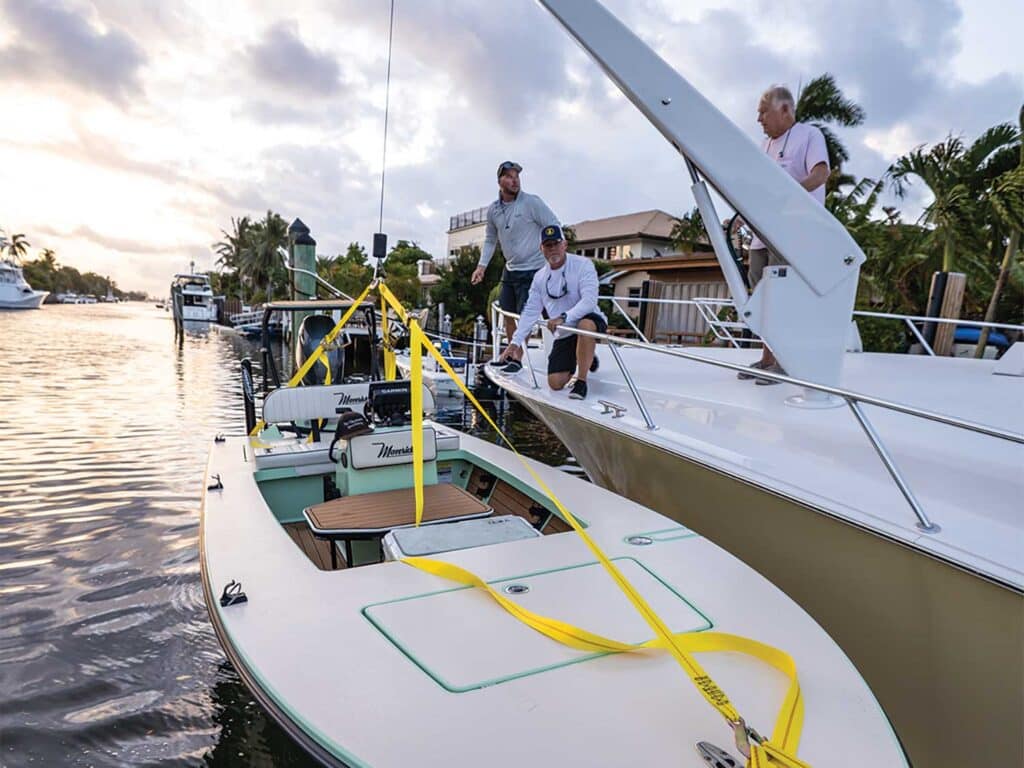
Heavy Lifting
If you already have a davit, first confirm its capacity. Once you know what it can handle, work with the skiff builder for accurate weights. Make it clear you’ll be lifting the skiff onto a sport-fisher bow and know your davit’s limits.
Be cautious of “hull weight” claims. A 17-foot skiff advertised at 350 pounds rarely includes the fiberglass tabbing, wiring, rigging, engine or fluids. Add gear, fuel and supplies, and that 350-pound skiff can easily top 1,200 pounds. Do your homework—or get guarantees from the builder—before you buy.
For lifting, davit manufacturers offer two main harnesses: fixed stainless-steel cable or adjustable Dyneema fiber. Both are strong, but I prefer Dyneema. It allows adjustments for load changes, doubles as a towline, and is easier to handle and stow thanks to its smaller diameter.
When towing, don’t rely on standard D-rings used for trailering. They aren’t designed for it. A proper towing eye positioned lower on the hull allows the skiff to plane and tow efficiently. Many builders can laminate a fiberglass tube into the hull during construction, making for a light and strong towing eye. Stainless towing brackets are another option, but they add weight and require ongoing polishing.
Final Thoughts
The outboard on your skiff is one of the most important considerations. Many great motors exist but always measure horsepower against weight. If you plan to travel internationally, Yamaha is the safest bet because parts and service are widely available. Discuss engine size and options with the builder to avoid overloading the skiff.
Last but not least, bottom paint on a skiff is a must to combat marine growth. Traditional bottom paint, with its antifouling properties, leaches off of the skiff and stains the foredeck of the big boat. You want to avoid this. These days there are a couple of new products out there that have a clear finish, and are environmentally friendly and very effective. I put the Hull Maxx clear bottom paint on a skiff two years ago, and it has made cleaning the bottom a breeze. Plus, there is no staining of the foredeck. If you plan to leave a skiff in the water for more than two days, the growth will get out of control. So, bottom paint is a must.

